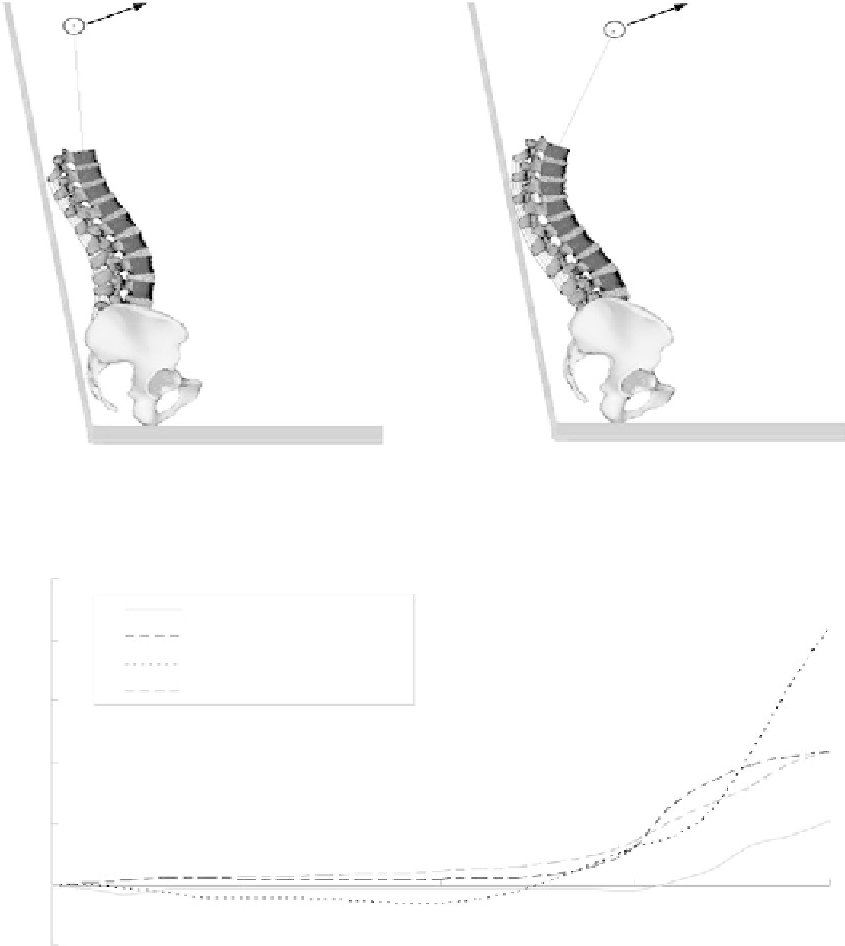Biomedical Engineering Reference
In-Depth Information
An accelerative load with peak value of 15 G, duration of 0.2 s, and onset rate of 150 G/s was exerted
on the seat pan at an angle of 5° to the back of the seat. In the whole process of simulation, all the
components in the finite element model were constrained to move only in the sagittal plane of the
pilot and the pelvis and T9 were allowed to rotate only around the reference axis of the seat.
The results of simulation show that the harness plays a vital role in limiting the movement of the
pilot. Figure 18.14 shows a comparison of spinal deformations with and without the use of a har-
ness. Obviously, without protection from a harness, the upper body would move forward quickly
and result in excessive flexion over a very short time.
With the multibody dynamic model, the effect of restraint systems on the aircraft occupant can
be analyzed quantitatively. Figure 18.15 shows the dynamic response of the hip and thorax (near T9)
Mass of point
Mass of point
FIgure 18.14
(See color insert.)
Response of the thoracolumbar spine with (left) and without (right) the
harness.
10
Hip displacement
Hip rotation
8
orax displacement
orax rotation
6
4
2
0
0.00
-2
0.05
0.10
0.15
0.20
Time (s)
FIgure 18.15
Displacement and rotation of the trunk of the pilot during ejection.

Search WWH ::

Custom Search